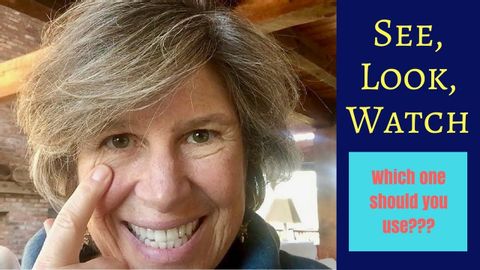See、look、watch 都是「看」,但是差別在哪又該怎麼正確使用呢?(See, look, watch - which one to use in easy, slow English)
Samuel 發佈於 2024 年 08 月 14 日  沒有此條件下的單字
沒有此條件下的單字US /səbˈskraɪb/
・
UK /səb'skraɪb/
- v.t./i.出現;估計;我認為〜;認為
- n.身影;(計算過的)數量;肖像;圖;形狀;人物;名人;人影;數字
- n. (c./u.)公有地;公共用地;廣場
- adj.共用的;常見的;普通的;普遍的;粗俗的;普通名詞
